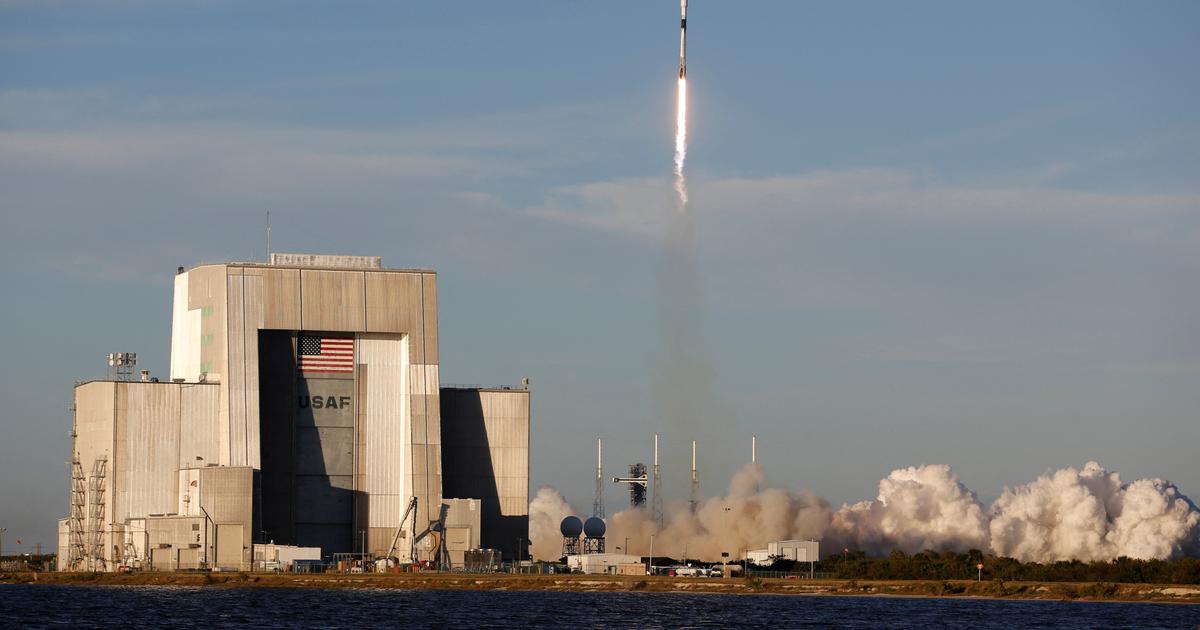After its one-day postponement, the SpaceX rocket took off

The mission carries a lunar lander developed by the American company Intuitive Machine, which hopes to become the first private company to successfully land on the Moon.
After technical problems a day earlier, the rocket carrying the lander of a young American company, which hopes to become the first private company to successfully land on the moon, took off between Wednesday and Thursday night. SpaceX’s Falcon 9 rocket lifted off in Florida at 1:06 a.m. (06:06 GMT) on Thursday.
The first launch attempt had to be abandoned during the night between Tuesday and Wednesday. The operation is more delicate than a normal takeoff for SpaceX, which must fill the lander with its cryogenic fuel (liquid methane and oxygen) before filling its own rocket.
A methane temperature problem was encountered during the first attempt, which was postponed. The mission, called IM-1, carries a moon lander developed by Intuitive Machines, a Texan company founded in 2013.
After liftoff, the lander must separate from the rocket’s upper stage and power up. Communication should then be established with the Intuitive Machine control room located in Houston, Texas. The first thrust of the engine is planned to check its operation and adjust the trajectory towards the Moon.
Moon’s South Pole
The trip will be quick: If all goes as hoped, the device will attempt to land on the moon next week, on February 22. After the Soviet Union, United States and China, India and Japan recently successfully landed on the lunar surface, becoming the fourth and fifth countries to do so.
But several private companies, including another American company, have failed to reproduce this feat. If Intuitive Machines succeeds, it will be a historic milestone for the space sector, marking the first landing of an American spacecraft on the Moon since the end of the Apollo program, more than 50 years ago.
The model of the lander sent is called Nova-C and is over four meters tall. The clone used for this first mission was named Odysseus. It carries six private cargoes, including sculptures by contemporary artist Jeff Koons representing the phases of the moon.
But above all it carries six scientific instruments from NASA, the main customer for the trip. The mission is part of a new program called CLPS, established by the American space agency, which has entrusted private companies with carrying scientific instruments to the Moon in preparation for the return of astronauts.
By relying on the private sector, NASA says it can send more materials, more frequently and for less time, than the vehicles it connects to. The contract signed by NASA for this first intuitive machine mission is worth $118 million. The planned landing site is a crater near the Moon’s south pole, which has yet to be explored.
Organized many missions
The lunar south pole is important to NASA, as it is there that it wants to land its astronauts as soon as 2026 as part of the Artemis mission. Reason: There is water in the form of ice, which can be used.
The six scientific instruments on board should make it possible to study this particular environment. Four cameras, for example, will observe the landing phase and projected dust during landing, to compare its effects with the Apollo moon landings conducted near the equator.
The first American company, Astrobotic, also under contract with NASA for the CLPS program, failed to reach the moon in January. A new astrobotic test, as well as two other Intuitive Machines missions (IM-2 and IM-3), are already planned for this year.
A third American company, Firefly Aerospace, should also attempt the venture in 2024. Tests by other companies, Israeli and Japanese, ended in crashes in 2019 and 2023.




